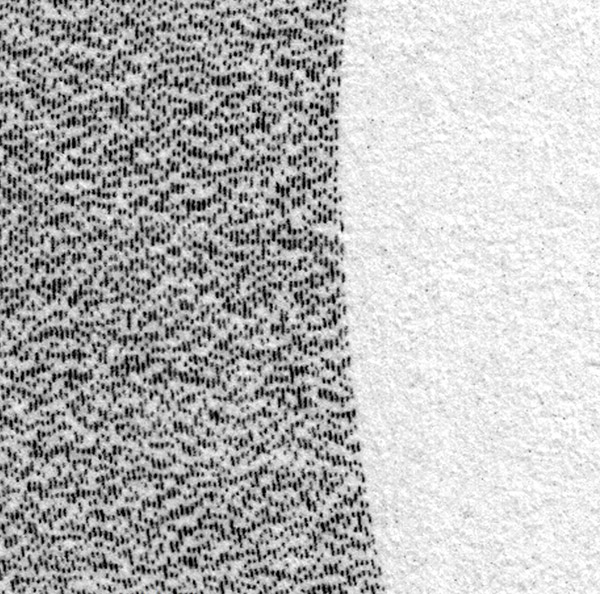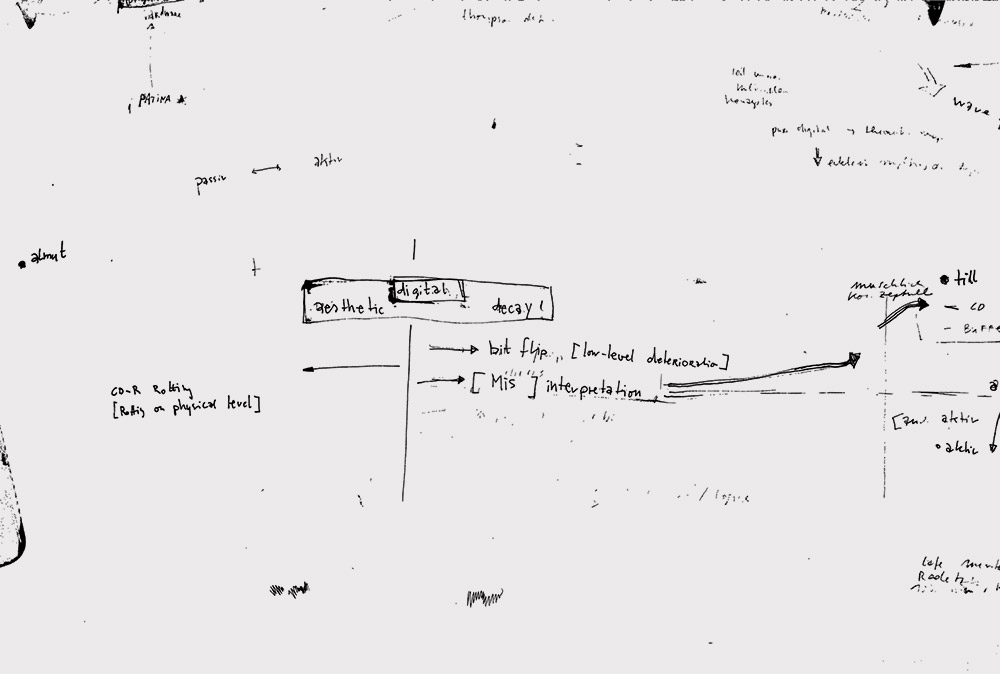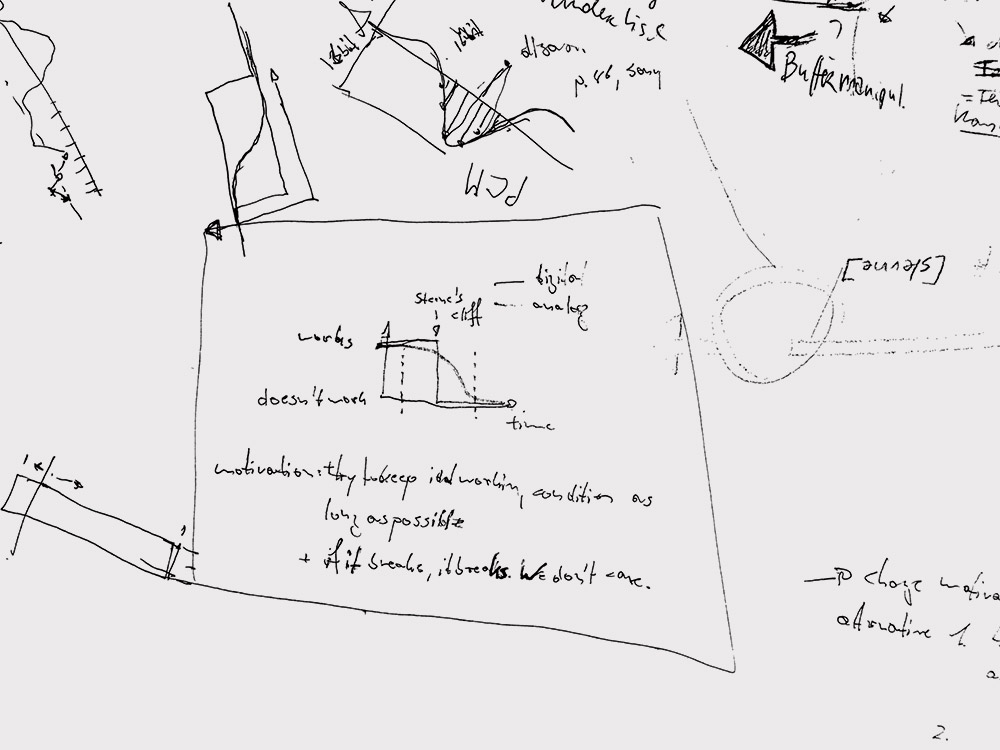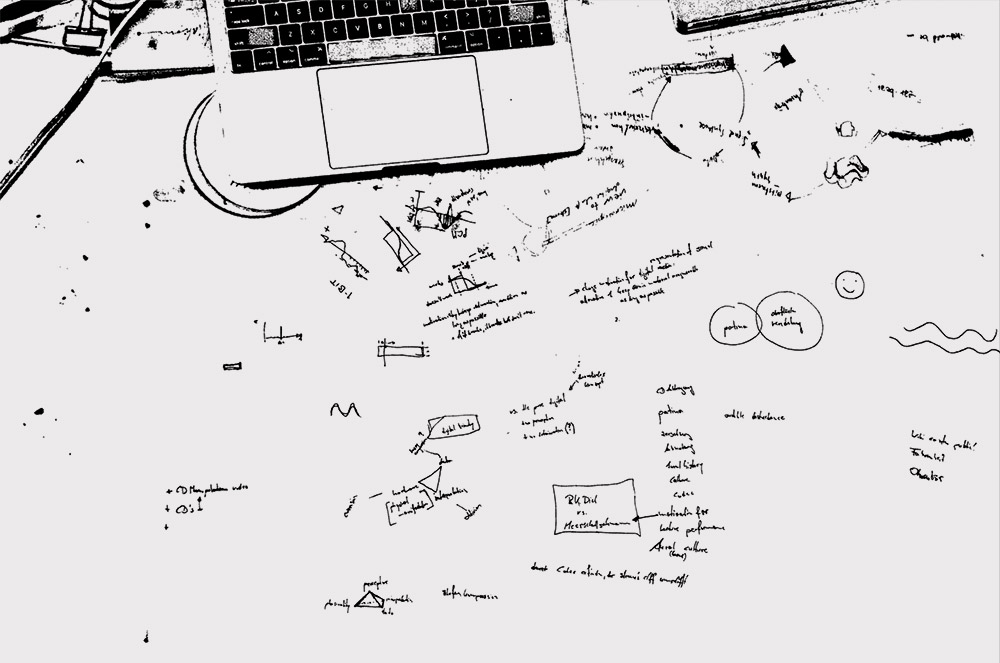On the Temporal Deterioration of Digital Audio: Embracing Degradation
“Pure, perfect sound – forever” was the marketing slogan with which Philips introduced the compact disc at the beginning of the 1980s. Since then, nearly 40 years have gone by—and the lion share of available media, both audio and video, is now produced and stored in digital form.

But even so: time has taken a noticeable toll on the shiny, smooth façade of digital media technology. Quite contrary to the perfection once proclaimed, our everyday experience has proven that this technology and its underlying data indeed are subject to a process of deterioration and do degrade in various ways over the long term. This applies to the physical substance of storage media and playing equipment as well as to media formats and software in terms of their technological infrastructure.
The artistic research project “rotting sounds – Embracing the Temporal Deterioration of Digital Audio” deals with the causes, mechanisms, and effects of such decay in the specific context of digitally stored sounds. This project is financed by the PEEK programme of the Austrian Science Fund (FWF) and began in May 2018. It is a cooperative project between the mdw –University of Music and Performing Arts Vienna, the University of Applied Arts Vienna (represented by sound artist Till Bovermann), and the Academy of Fine Arts Vienna (in the person of restorer Almut Schilling).

Thesis: Technological products of all kinds degrade in a way that cannot be stopped.
According to the second law of thermodynamics, degradation is linked with an increase in entropy and can be stopped only temporarily or locally, never generally. And for the matter at hand, obsolescence is a key term signifying the phenomenon of wearing out and loss of function within an ecosystem, which plays a significant role in the case of complex digital media technologies. Our most important priority is to discover previously unknown degrees of freedom in dealing with the omnipresence of decay and prototypically place these in the service of artistic practice.
In doing so, the following research questions are central: How can such phenomena be understood, triggered, reproduced, guided, and used within sound art? What are the mechanisms and effects of obsolescence in terms of hardware and software? How can one model the process of deterioration in the digital domain, and what are its products and residues? And finally, what influences are exerted by the environment and human interaction?

Thesis: Digital (and other) artefacts are to considerable extent products of the symptoms of their decay.
This project started by researching the foundations and mechanisms of deterioration in theory and through experiments, and Europe-wide workshops have been organised in order to come up with artistically relevant concepts. The team works with international experts such as Marije Baalman, Martin Howse, and Martin Gasser to develop basic, open, and easily accessible technologies for digital audio that can then serve as the bases for experiments. Particular attention is also paid to conventional and possible representations of music in the digital domain—in the form of symbols and bitstreams and on the basis of algorithms. And further investigations have to do with data storage media, electronic switching circuits, program code, and their logical and physical environments, all of which are highly special aspects of human interaction.
Thesis: In order to understand modes of degradation, we must avoid complex technological systems.
At the centre of this research are forms of artistic expression that make a theme of these general questions. Prototypical musical compositions (primarily for loudspeakers), sound installations, and above all multimedia works are being developed. In the process, selected works are taken to completion and subjected to the public over long periods of time or in challenging environments. Available for this purpose is the “Altes Auditorium”, an unrenovated lecture hall on the rear side of the library building that has been repurposed as a sound laboratory and exhibition space. Beginning on 29 March, this space will be made accessible to the general public on a limited basis. The works to be exhibited there initially will address long-term transformative processes undergone by sound within its environment, affected by the employed materials as well as environmental factors.

Maxim: Embrace degradation and apprehend it as transformation.
This undertaking has been conceived as a lighthouse project that aims to increase the attention paid to largely un-researched characteristics of digital sound as a main component of contemporary artworks and of commensurately pervasive technology. General awareness of the materiality, fragility, and socio-economic context of digital data is to be raised by discussing and disseminating these themes among the broader artistic and scientific public. This approach is fundamentally inverse to the typical technical and/or scientific methodologies: rather than searching for ways to overcome what is generally understood to be a defect, the proposition put forth by the project team is to wholeheartedly embrace this phenomenon and conceive of it as an artistic option, thereby transforming the potentially detrimental into something useful.

